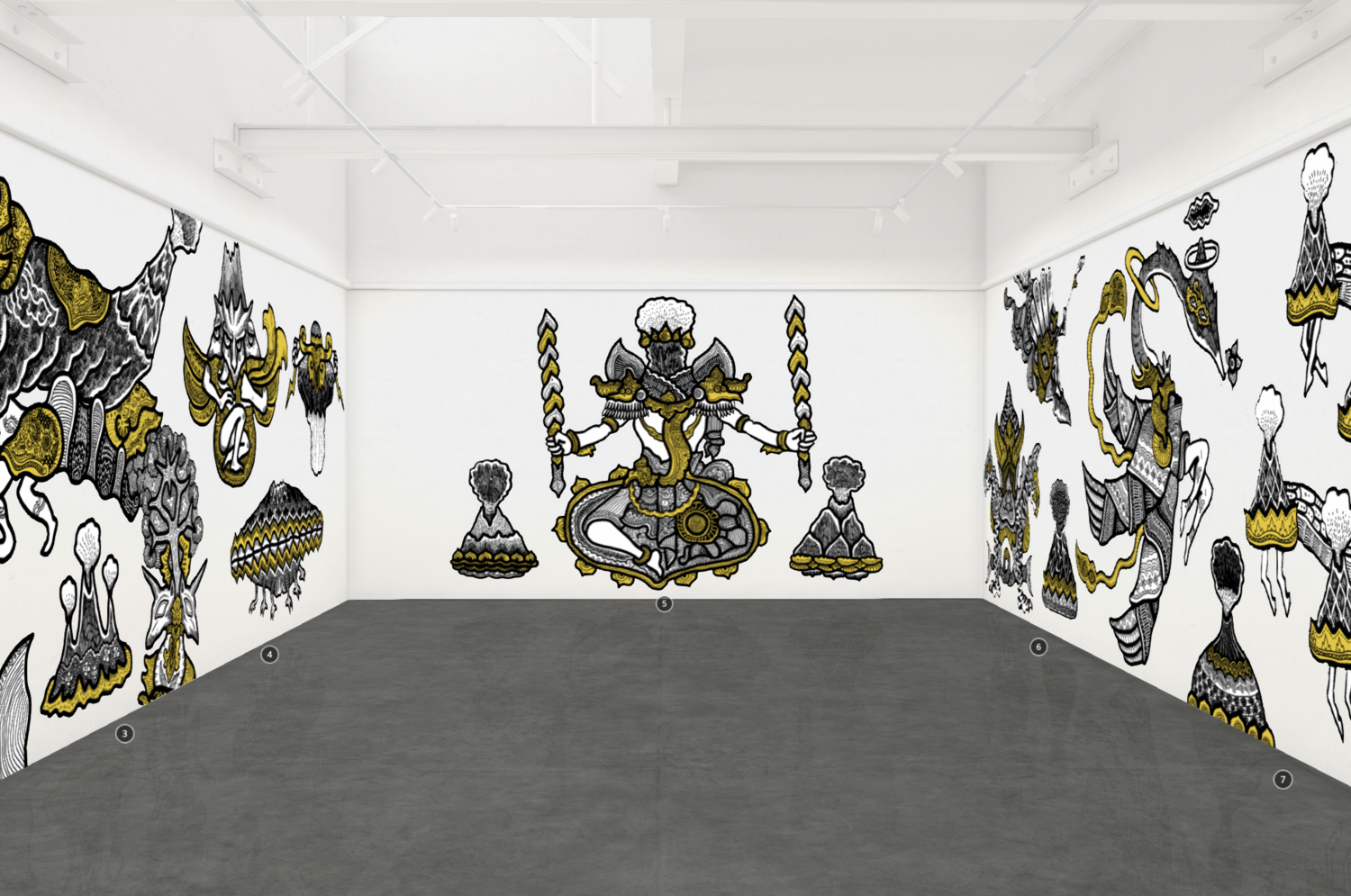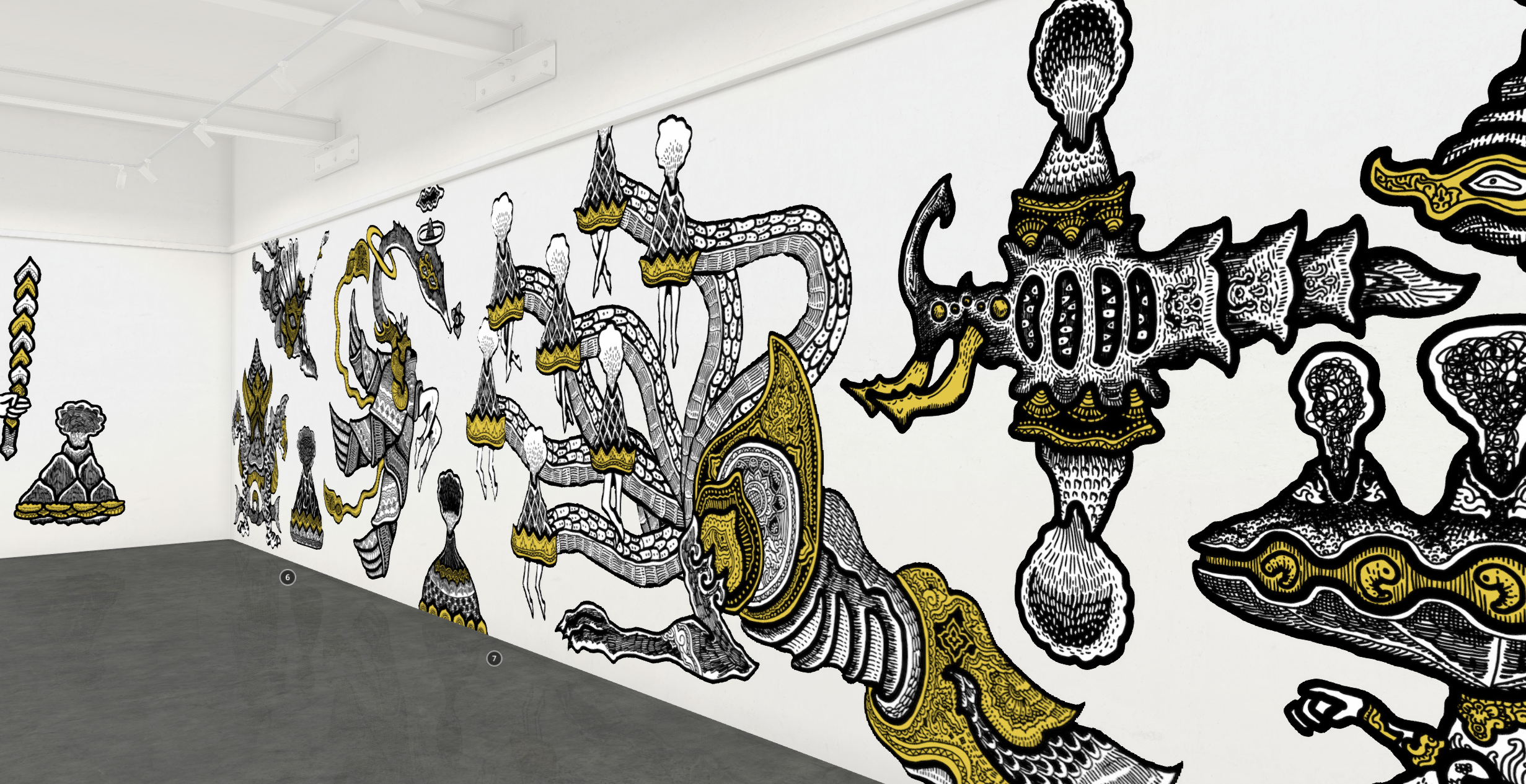ANCA Critic-in-Residence Annette An-Jen Liu spoke with Rinaldo Hartanto about his digital exhibition ‘Mythopoeia’ with ANCA Gallery. Featured on ANCA’s website from May 14 to June 3, 2020, the exhibition explored the powerful sentiment of collective anger through a visual embodiment of amok.
‘Mythopoeia,’ the making of a myth, is a word that has existed in the English language since around 1846. It became a narrative genre in modern literature when J.R.R. Tolkien popularised the term in his poem by the same name, Mythopoeia, written in 1931. The poem is a response to C.S. Lewis’ then scepticism in the value and usefulness of mythology, defending creative mythmaking as an artistic endeavour to establish spiritual and foundational truths.
Rinaldo Hartanto, a Canberra-based, Indonesian-born graphic designer, illustrator and printmaker has had a long-time fascination with mythology and folklore. Inspired by Tolkien’s influential work as a world-builder and a philologist, Hartanto’s digital exhibition at ANCA Gallery was also titled Mythopoeia. Taking the form of an interactive digital mural, the exhibition presented an intricate visual embodiment of ‘amok’: a state of uncontrollable rage and disruption; to be in a frenzy of violence; to go berserk. The amok in Hartanto’s Mythopoeia focused on the etymology of the Indonesian and Malay roots of ‘amuk,’ signifying a collective anger. He also noted that the word entered into the English vocabulary in the 17th century when European explorers first encountered angry locals in Southeast Asia who had ‘mengamok’: run amok.
This colonial encounter with a collective of amok was explored in an earlier work of Hartanto’s, Archipelago of Fury (2020) , a series of eight drawings exhibited in this year’s Art Not Apart festival. Each drawing shared the same base of a volcanic island and a Padewakang boat, traditional boats used by the Makassar and Bugis group of South Sulawesi in Indonesia to sail to Australia. The exploration of history and cultural exchange is also reflected in Hartanto’s technique of combining traditional prints with digital drawings, a practice where he looks to the European Old Masters of Albrecht Dürer and Hans Holbein the Younger alongside Indonesian artists like I Gusti Nyoman Lempad and contemporary artists such as Sun Xun and Guan Wei. Describing his practice as one of hybridity, Hartanto dove deeper into Mythopoeia with a more complex melange of mythical figures from the Hebrew Leviathan, the Japanese Crane Wife, Indonesian Kala, Greek Hydra and more. The fantastical figures were flat, collaged of unique symbols and mesmerising patterns. They were also fiercely commanding, filling up much of the virtual wall space and breathing to life with looping animation. The digitality of the exhibition space enabled the animated figures to distort a sense of scale, creating a dynamic engagement.
Mythopoeia was an ‘indoor archipelago’ of amok, with dichotomies and juxtapositions between opposing forces of life and perspectives. Focusing on a duality, the volcano became a key motif, as Hartanto drew parallels between the sentiments of amok to the destructive eruptions of volcanoes,
a devastating natural disaster that also importantly provides nutrients to its surrounding soil and gives rise to new land. In each of the fantastical figures, the volcano was incorporated as a crucial bodily part, emphasising its nurturing quality of growth that exists in conjunction with its capacity for destruction.
There were also six distinct volcanoes that stood alone, each of them differently ornate. Hartanto used a simple palette of black and white with highlights of a goldish yellow, referencing Javanese shadow puppets. The striking colour is one of royalty, often used in depicting deities, and in Javanese mysticism refers to the placenta, the element of air and worldly attachments. The six independent volcanoes, with two per wall, were all decorated with a strip of the noble yellow, further indicating their life-giving qualities and highlighting the dual nature of all in this dynamic archipelago.
Mythopoeia was also accompanied by seven couplets, read as annotations to specific sections of the digital mural. This writing was Hartanto’s own response to his visuals, a process he explained to be ‘reverse-engineering’ his own mythmaking. The poetic couplets narrated how a destructive burden of fury was ultimately met with peace, inspiring an introspective and constructive way to channel anger. In the ongoing global uncertainties of a public health crisis and social distancing measures, there is a shared dread, anxiety, and restlessness across international borders, one that Hartanto observed to be an internalised collective anger, an amok. Embracing the creative process of mythmaking, Mythopoeia established a compelling narrative that speaks to the strength of instigating amok to reimagine the foundational human spirit of solidarity, a pressing call to urgent and disruptive times.
Title image: Rinaldo Hartanto, Mythopoeia (Fragment), 2020. Unique State. Digital drawing.
Below: Rinaldo Hartanto, Mythopoeia (installation details), 2020. Unique State. Digital drawing.
Article by 2020 CiR Annette An-Jen Liu as part of the Critic in Residence (CiR) program. The CiR is a partnership program between Art Monthly Australasia and ANCA.


